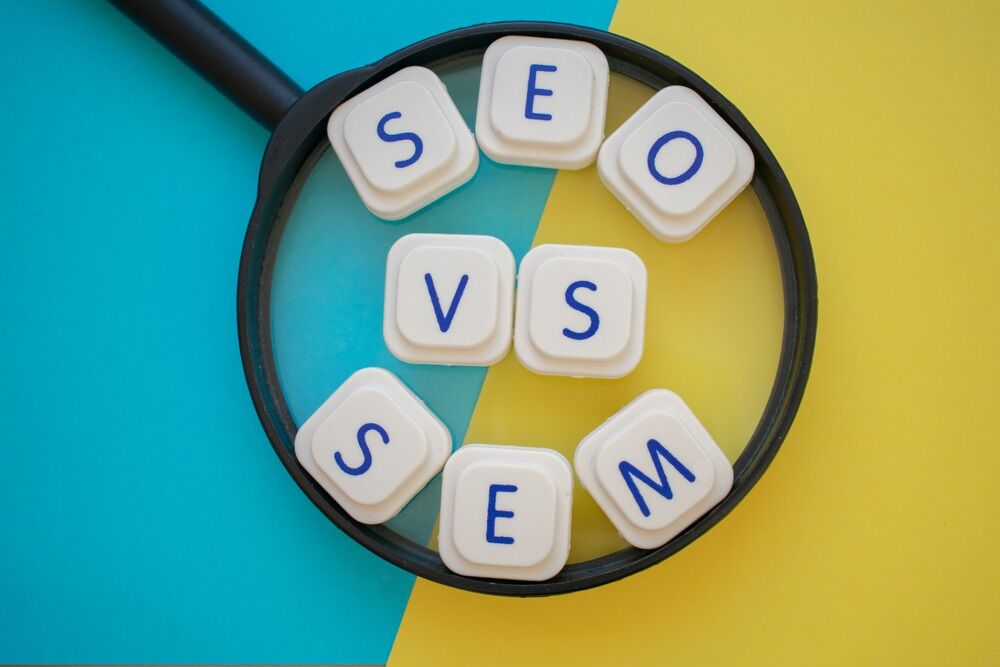What Is The Difference Between SEO And SEM?
Search optimization is a crucial marketing strategy for businesses trying to drive website traffic, attract attention, and grow their company. However, search optimization can be a challenging strategy to manage if you don’t know the difference between search engine optimization (SEO) and search engine marketing (SEM).

Both SEO and SEM may sound the same, but they’re two different techniques for search optimization. If you use SEM and SEO interchangeably and don’t know their differences, you might not be able to communicate an effective and clear strategy to improve your visibility in search. So, before you get started and hire an SEO Agency in Singapore, make sure to read below to know what SEO and SEM are.
An Overview Of SEM
SEM stands for Search Engine Marketing. It is when website owners use paid search strategies to gain better visibility in the search engine results pages (SERPs) and more traffic to their websites. Such tactics may include the use of a certain amount of money to pay for visible ads related to the searcher’s query, which is also referred to as pay-per-click (PPC) or paid search.
The ads may come in various formats, including:
- Visual-based ads like shopping ads or product listing ads
- Text-based ads
The primary benefit behind SEM is that it provides website owners the chance to market their services in front of their target audience.
An Overview Of SEO
SEO means Search Engine Optimization. Unlike SEM, SEO uses an organic tactic to gain visibility in the SERPs. Businesses or website owners don’t need to pay for placement on SERPs. Instead, they can earn placement by using various tactics like producing quality and valuable content that prompt search engines to show their content near the top of the results page.
SEO includes several tactics that can help businesses increase their search rankings. Typically, they use the strategies below:
- Off-Page SEO: It helps build a website’s authority and reputation by connecting it to some high-quality websites. Off-page SEO techniques often include link building from various websites and managing directory profiles and local listings.
- Technical SEO: It optimizes your website’s non-content elements to improve its foundation and backend structure. Such strategies relate to mobile friendliness, site speed, security, structured data, site architecture, indexing, and crawlability. Technical SEO improves both search crawler and user experience, which results in high search rankings.
- On-Page SEO: It optimizes every individual page of the website to target specific keywords and appeal to the search engines. The strategies may include content creation, keyword optimization, and keyword research.
Strong SEO plans don’t focus on only one type of SEO. Instead, they combine all the above strategies to produce excellent results.
Top Differences Between SEM and SEO
Now that you know about how SEM and SEO works, here are the top differences you should know:
- SEO Can’t Drive Immediate Results
When SEM paid campaigns are live, they appear in the search results when approved. While SEO can be a valuable marketing tool, don’t expect immediate results. It might take a few months or weeks to show results unless you don’t have any competition.
Not having competition is rare since most businesses are competing with one another to rank on the first page of search engines. Plus, building an organic strategy may take more effort and can be time-consuming.
- In SEM, You Need To Pay For Impressions Or Clicks
In the case of SEO, your website may rank well due to organic efforts including backlinking. In SEM, on the other hand, the advertiser needs to pay each time the user clicks on the ad or for every thousand impressions depending on the ad campaigns. Thus, SEM is paid and SEO can be free of charge.
- SEM Is Easy To Test
In SEM, there’s a need to select a new target audience or revise the ad copy. For this reason, SEM often requires testing. The changes should be made on the landing pages for every campaign. Testing doesn’t take more time, since most data is available and the results are given to everybody quickly.
In SEO, you can’t test whether or not it’ll work while you can test SEM. The algorithm may take time to consider the changes made, recognize the backlinks, crawl the pages, and more. So, your SEO strategy can’t be easily tested and tends to be a slower process.
- SEM Doesn’t Deliver Cumulative Results
SEO strategies often consist of months and weeks of work on backlinking and finding techniques that work best for the company. The efforts put into building SEO strategies may reap benefits over some time. In terms of SEM, when the ad campaigns are over or the ads are disabled, they’ll lose visibility.
Bottom Line
There’s no simple answer or quick formula to know the difference between SEO and SEM. It’s because it depends on various factors, which may include your company’s competitors and business goals.
Although both are quality marketing strategies that provide advantages to many businesses, deciding which one to use may depend on what you’re trying to achieve. So, make sure to know the differences between SEO and SEM to know which strategy is best suited to help your business reach its goals.


Sorry, the comment form is closed at this time.